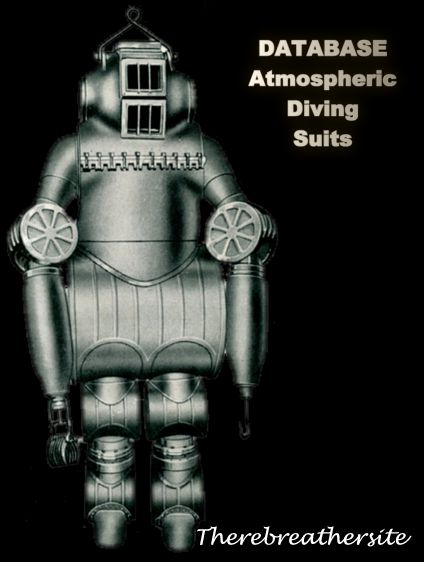
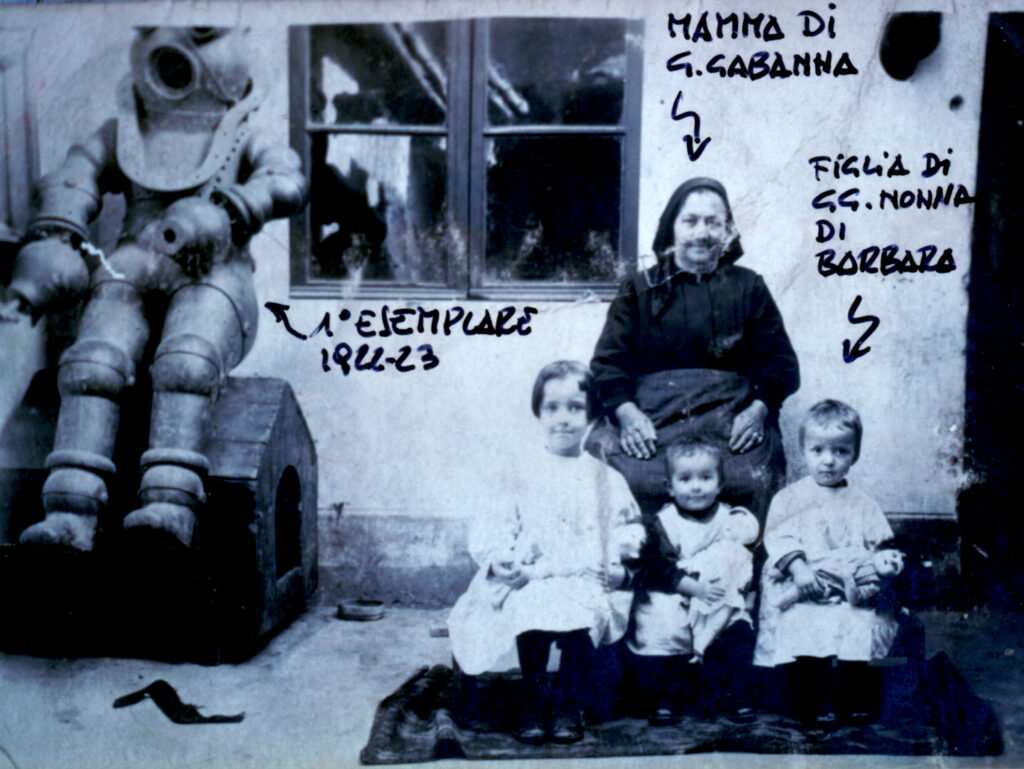
The following article was written by Giancarlo Bartoli and Faustolo Rambelli, president of The Historical Diving Society Italia 1994-2020. It is my pleasure that Giancarlo, Faustolo and HDSI have given me permission to translate the original article from the revue HDS NOTIZIE n. 66 of 2019 and make it available to the readers of my website. This article describes the fantastic inventions from the time of Gabanna and Galeazzi. Newly discovered photos add puzzle pieces to this history.

by G. Bartoli and F. Rambelli
Roberto Galeazzi senior
In the volume Rivista Marittima of June 1932- X (X of the fascist era) we read an in-depth and detailed technical report by Roberto Galeazzi senior of 35 pages entitled “The Galeazzi spherical structure in the resistant hulls of submarines” with the following introductory words: “After a preamble by engineer Bezzi, the author summarizes the calculation methods for the resistant hulls of submarines. He explains the characteristics and method of calculation of his new spherical zone structure, discusses the objections made to it, lists the applications carried out and presents the results of experiments with small-scale and real models, illustrating the methods of analysis. He concludes by summarising the advantages of the new structure and noting the development given to the problem by the Muggiano Shipyards” (fig. 1).

In practice, the Galeazzi spherical structure, when compared with a traditional cylindrical structure, can:
a) with the same diameter and weight of the two structures, resist much greater external pressures than the cylindrical one;
b) with the same diameter and external pressure, weigh much less than the cylindrical one.
Roberto Galeazzi senior (1882-1956), attended an engineering course at Pisa University, but dropped out after a few years. During the following years he gained considerable experience working for various companies in Italy, Belgium and, but only for study, in the United States. In 1926, he invented and patented the Galeazzi Spherical Structure, but it was adopted by the Italian Navy not for the construction of submarine hulls, but only for some of their components. In 1936, R. Galeazzi officially founded his own company “Cav. Roberto Galeazzi – La Spezia”, with headquarters in Via XX Settembre, 42 and in the same year he built his first ADS, the “Scafandro G.P. tipo Galeazzi R.M./200” – where the acronyms “G.P.” stand for Great Depths and “G.M./200” stand for “Great Depths”. G.P.” stands for Great Depths and “R.M./200” for Regia Marina/200 metres – with its spherical structure in the body and limbs, whose test trials, which he himself carried out from aboard the RN Titano in the Gulf of La Spezia, ended on 11 January 1938
(fig. 2). In the following years, in addition to continuing the production of rigid articulated diving suits (now ADS – atmospheric diving suits), Galeazzi built diving equipment, observation towers that he called “butengoscopes”, and specialised in the construction of single-seat and multi-seat hyperbaric chambers and later hyperbaric systems for scientific experiments and hyperbaric oxygen therapy. The Galeazzi company continued its activities over the years until 1980 under the leadership of his son Roberto Galeazzi junior (1911-1994).
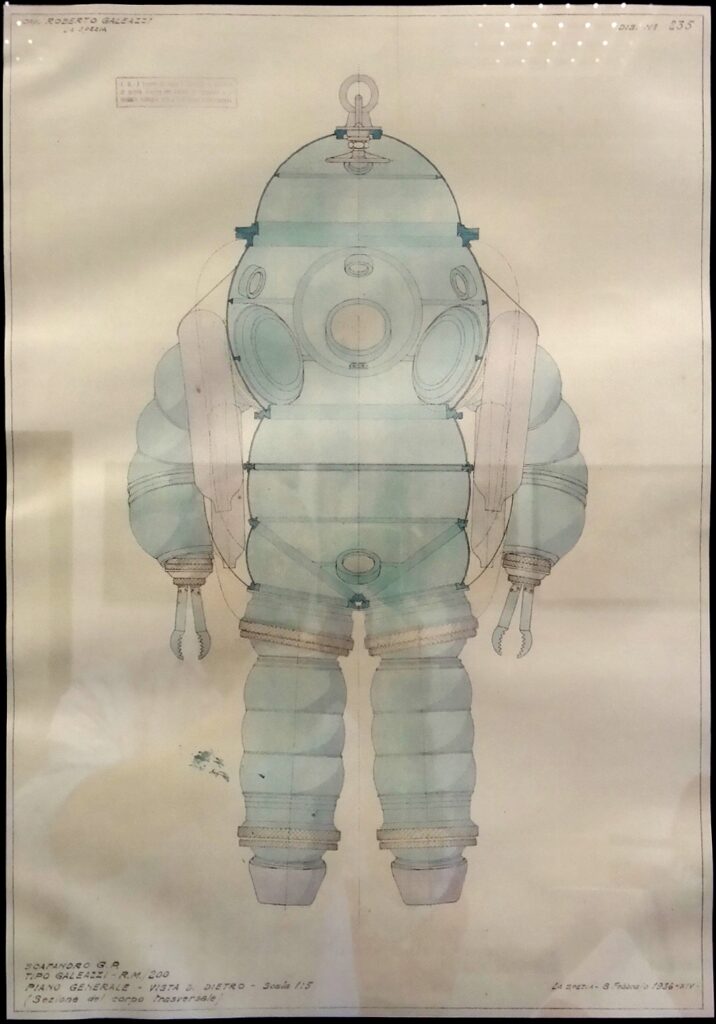
Neufeldt & Kuhnke
Neufeldt&Kuhnke is an old German company, founded in Kiel in 1899, which initially dealt with electrical installations. In 1905 it started its activities in the field of diving and built its first ADS in 1913. Over the years, several other increasingly sophisticated models followed until the model produced in 1927, the Panzertaucher-N&K3, in which, as Galeazzi himself confirms in his report in Rivista Marittima in 1932, the Galeazzi Spherical Structure was used for the first time. This was only applied to the body, while the arms and legs had a cylindrical structure. They, too, will have a spherical structure only in the following 1935 model (figs. 3-4).
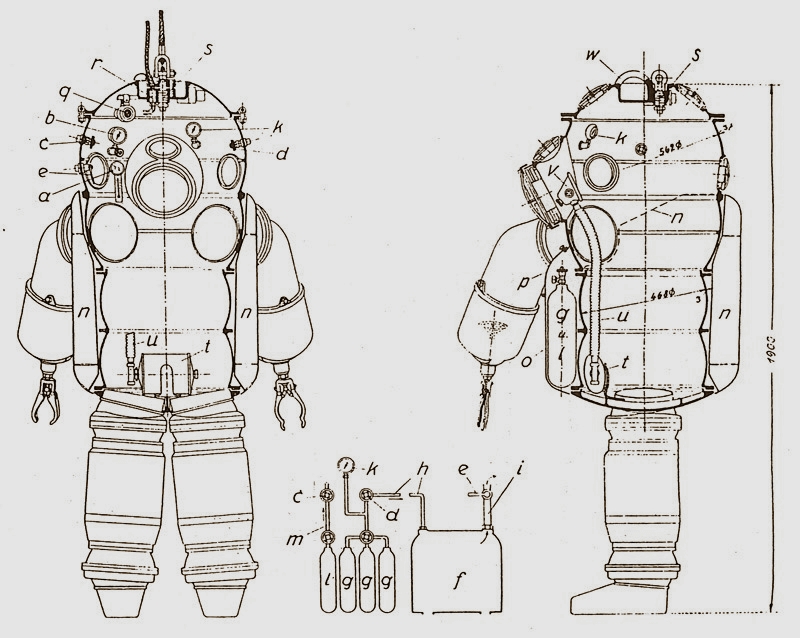
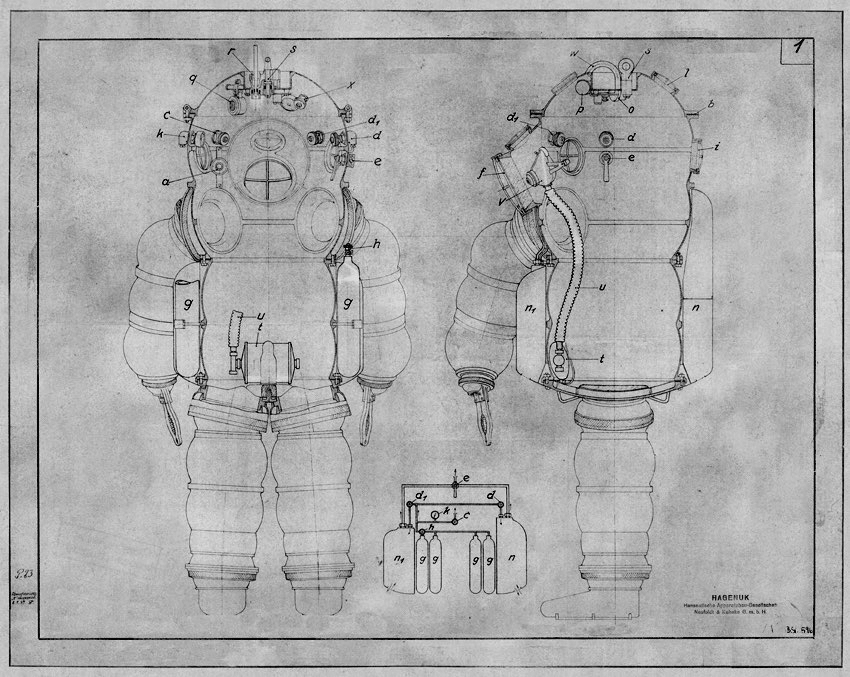
Sorima – Alberto Gianni
During the first dives carried out from aboard the Sorima (Maritime Recovery Company of Genoa, founded in 1926 by Giovanni Quaglia) vessels for the recovery of materials, goods and valuables contained in wrecks sunk in the deep sea, head diver Alberto Gianni realised that the Neufeldt&Kuhnke ADS “N&K3” with which they were operating, although partly modified, was cumbersome and impractical. So he designs a new type of exploration tower with several portholes from which the diver can give indications on the surface for the manoeuvres of the crane or the chariot for laying explosives, for working with the bucket and mechanical pliers or with the electromagnet. Gianni built his turret in Viareggio in Assuero Baroni’s workshop in 1927 with the body made of a steel tube, which was immediately adopted by Sorima. In 1929, however, following the collaboration between Sorima-Gianni-Galeazzi, the structure of the turret body was modified by applying the Galeazzi spherical section and it was taken aboard the Artiglio for the search and recovery of gold from Egypt (Fig. 5).
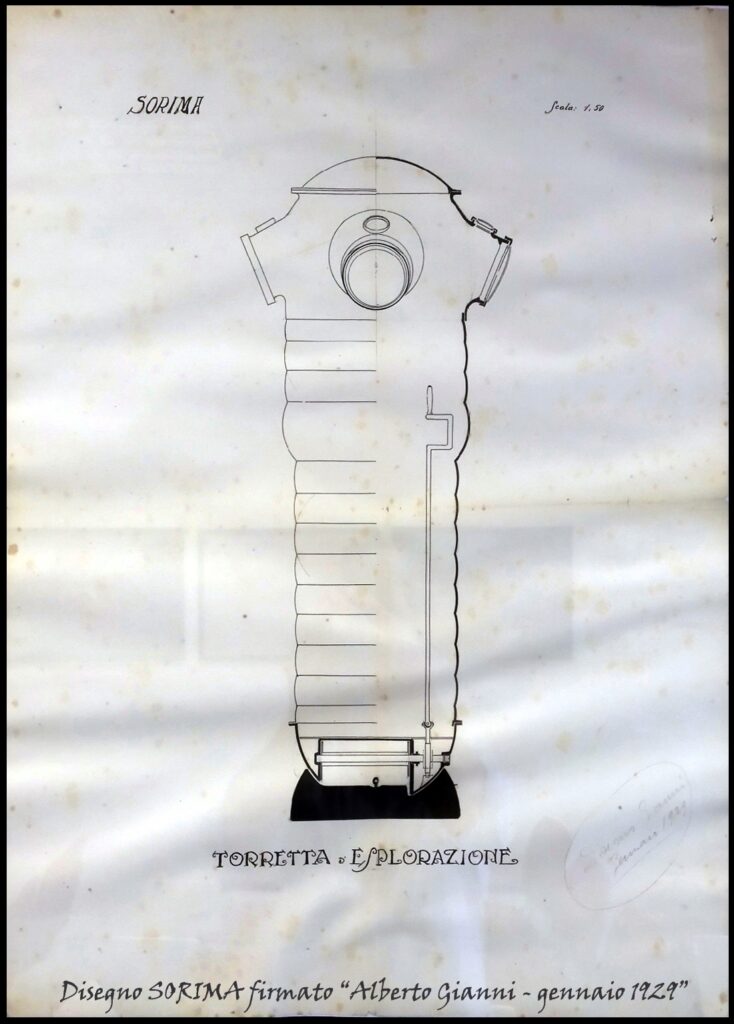
Giuseppe Gabanna
The Giuseppe Gabanna company is an old company from Turin, founded in 1878 for the construction and supply of complete plants for the production of wines, liqueurs, sweets, distilleries, tanneries, chemical and scientific laboratories, as well as specialising in copper processing (fig. 6). (note 1)
Note 1: The following has already been published on Giuseppe Gabanna:
a) an article in ‘HDS Notizie’ no. 14, January 2000 and
b) an entire chapter in the book Subacquea – gocce di storia, Editrice La Mandragora, 2006.
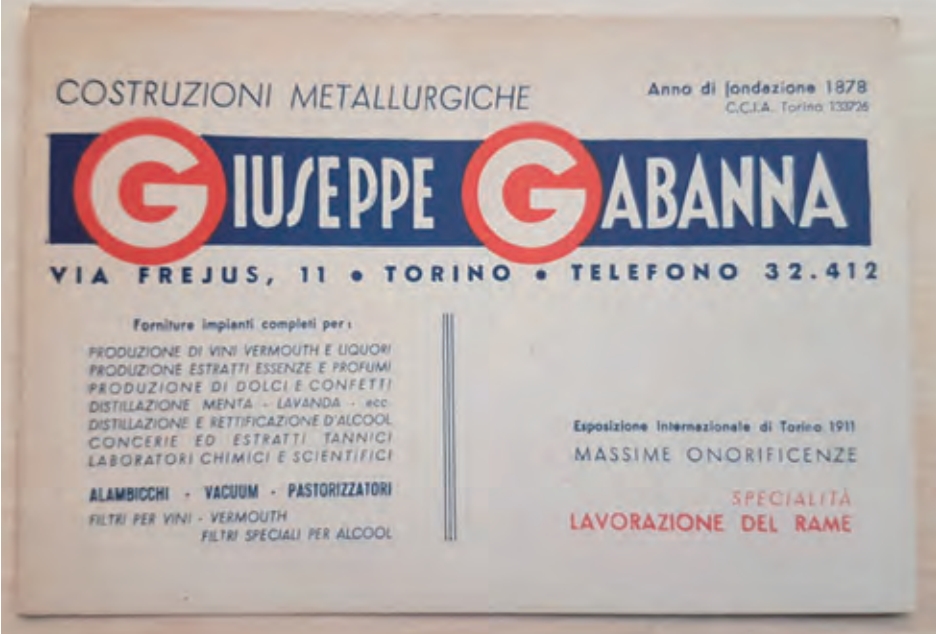
Within a few years, however, Gabanna’s entrepreneurial spirit led him to take an interest in the underwater world as well, so much so that he designed and produced – unfortunately, we do not know the date – the very strange “G. Gabanna – C.R.M.” diver’s helmet. – where the acronym “C.R.M.” stands for Casco Regia Marina – which Poinclou Christophe, a French collector, found in a French market in 1997, which unknown people stole a couple of years later and which has not been found so far. (fig. 7)
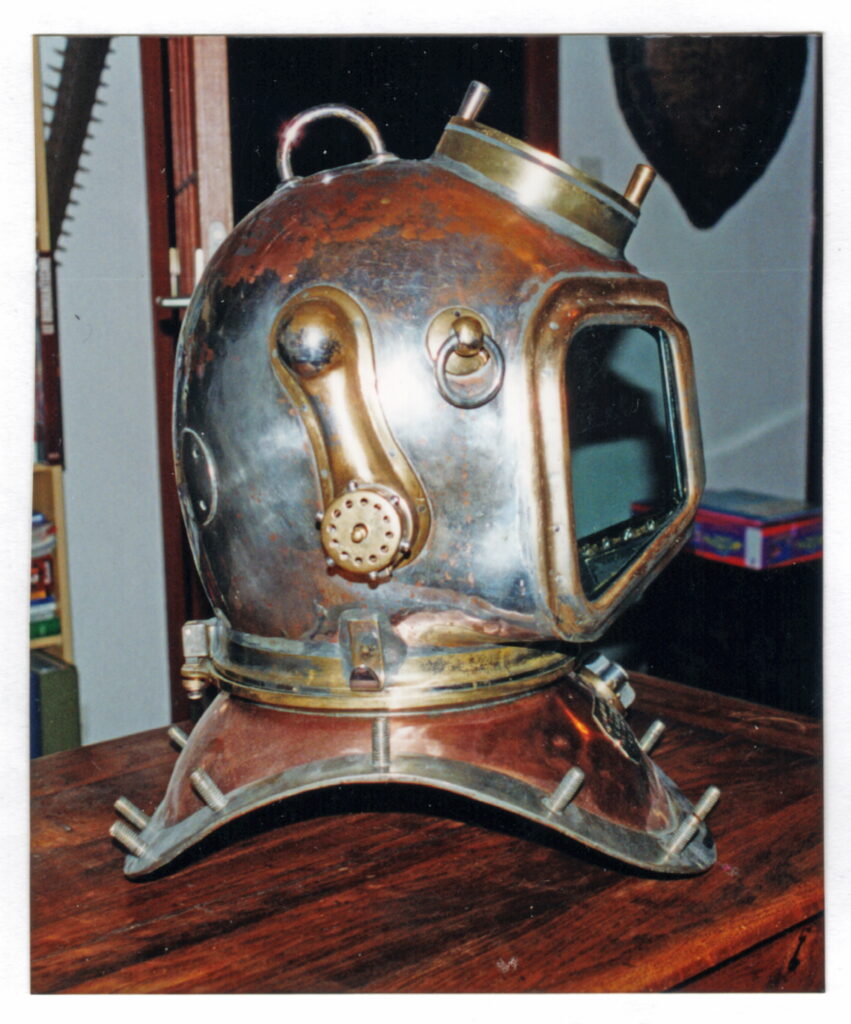
Gabanna also made articulated rigid suits. A first example can be seen in a family photo of 1922-23 leaning on the doghouse with Gabanna’s mother and daughter at his side (fig. 8). A second specimen can be seen in a photo, unfortunately undated, worn by his brother during a test dive (fig. 9). Two other very interesting ADS Gabanna, undated, are the ones in the following pictures, as they represent the crucial moment in which the diver’s breathing is changed from that provided by two hoses – air supply and exhaust – to the autonomous closed-circuit ARO-type breathing, but with the oxygen cylinders applied to the outside of the suit and covered by a protective plate (figs. 10-11).

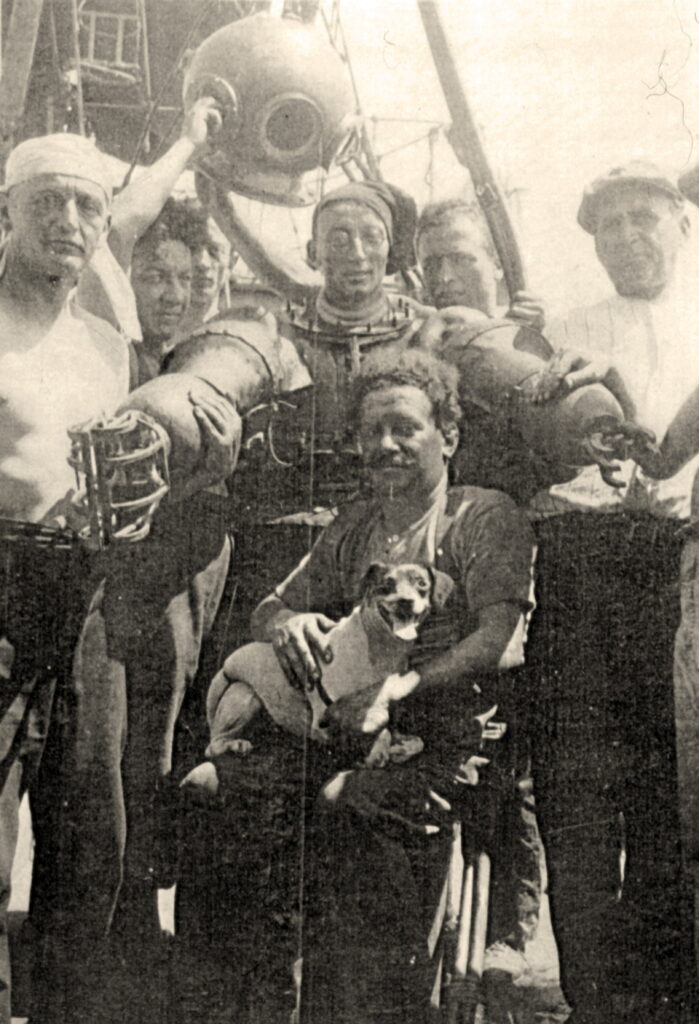
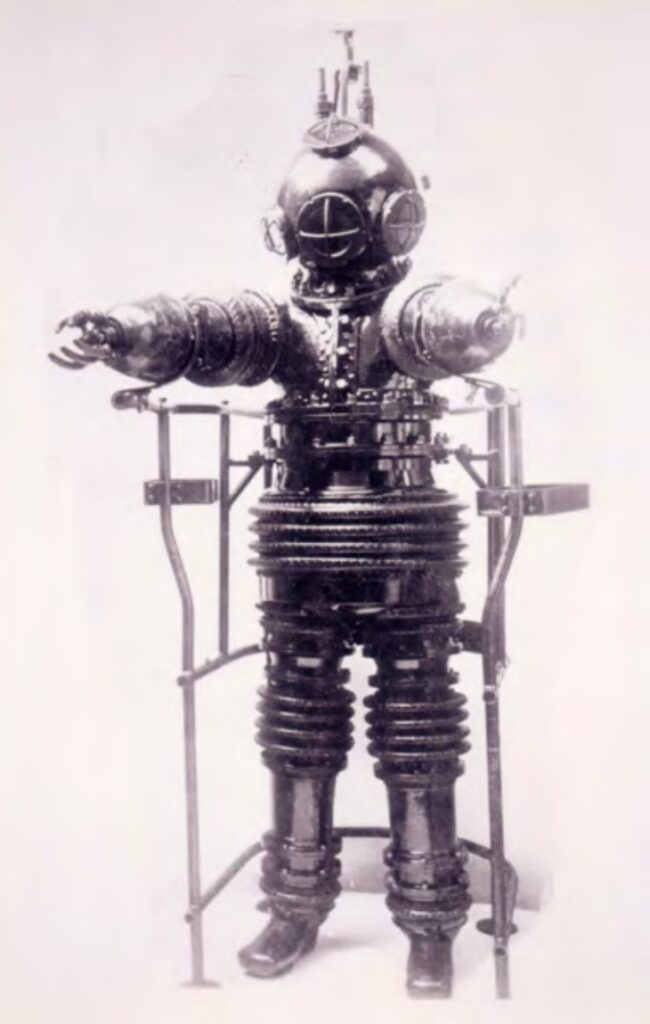
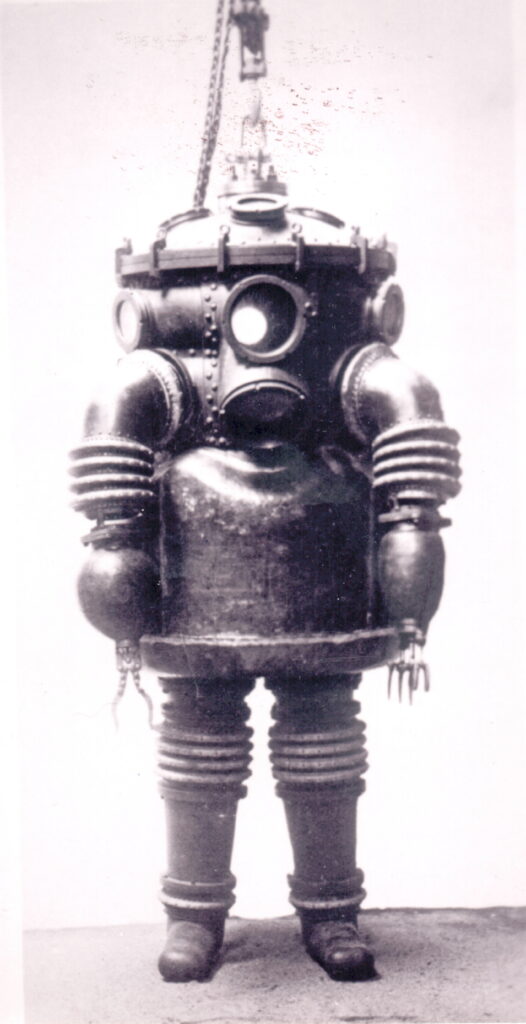
The above was all that was known about the Giuseppe Gabanna company until a few months ago, in addition to the fact that it ended its activity following the bombing suffered during World War II, which destroyed the workshop in Via Freius (fig. 12). We wrote “it was known” because at the end of 2018 our dear friend and member Hdsi Max – born Massimiliano Perugia – informed us that he had tracked down two images of Gabanna’s diving suits: – the first one is from a “Domenica del Corriere” of 1925 with the following descriptive paragraph: PER EMULARE I PESCI – A new type of diving suit with armour, which allows sea recoveries up to 150 meters deep. It was built by the Turin worker Giovanni Gabenna; (fig. 13). – the second is a 1931 photo of the Gabanna workshop with three scaphanders which is in the Turin State Archives. (fig. 14) Obviously we immediately contacted the State Archives to request a high definition jpg copy of the photo and to obtain their authorisation to publish it on “HDS Notizie”. Both requests were generously and quickly granted.
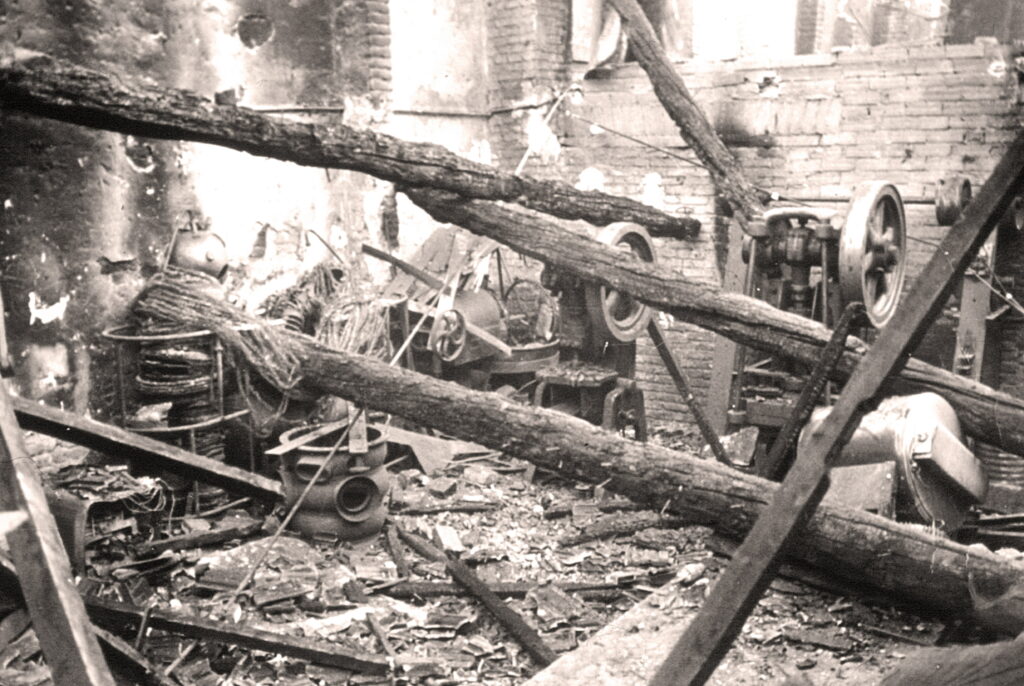
We believe that for all those who deal with the history of diving, these two photos, the one of 1925 and the one of 1931 in which Giuseppe Gabanna and three of his ADSs appear, glued on a black cardboard, with the dedication to His Royal Highness Ferdinand of Savoy, are two wonderful finds of extreme historical interest, as they confirm and allow us to clarify some historical-co-temporal moments. The first is that the 1925 diving suit, which appears in the “Domenica del Corriere” confirms that the two identical ADS models in the 1931 photo and the undated one in figure 10 were obviously built by G. Gabanna well before 1931, even if we do not know whether they were tested at sea or employed in some shipyards. The second one is that comparing the upper part (abdomen-head) of the incomplete ADS of the 1931 photo with that of the ADS of fig. 11, we notice that these are identical while the legs have a slightly different structure. We therefore have confirmation that;
– the body of the ADS of fig. 11 is constructed with a Galeazzi spherical structure;
– in the years preceding 1931 there was evidently a close collaboration between Gabanna and Galeazzi for the realization of this new generation of diving suits;
– that this diving suit, during 1931, was still under construction.
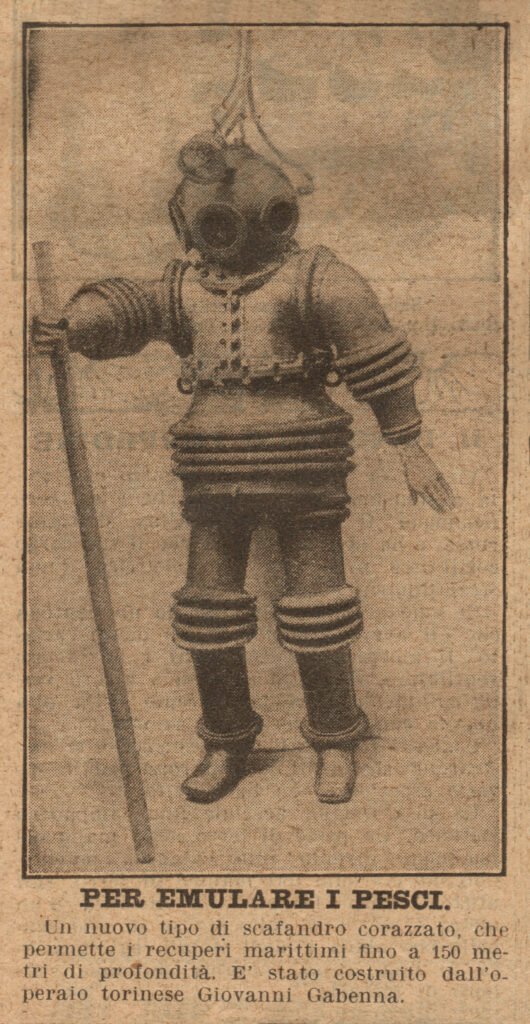
RN Titano This ship was originally designed as a deep-sea tug, built by the Ansaldo shipyard in Sestri Levante, launched in 1912 and entered service in 1913. In 1931 it was transformed into a “support ship for submarines and deep-sea divers”. In 1943 she was captured by the Germans and, according to a witness, in 1968 she was still moored in the port of Taranto, shabby and without an engine. In 2013 Francesca Giacchè, a member of Hdsi and editor-in-chief of “HDS Notizie”, after years of meticulous research, published her book Teste di rame, published by Ireco of Rome, which tells the stories of many divers. It was during her research that she came into contact with the heirs of Germano Gobbi, who gave her a photo – probably the classic end-of-course photo – taken in 1932 aboard the RN Titano, which shows a group of deep divers, including, standing next to the ADS ‘N&K3’ of Neufeldt&Kuhnke on the right in the photo, Germano Gobbi himself. In the photo, in addition to the Neufeldt & Kuhnke diving suit, we can see: – a butoscopic turret, behind the group of divers, – two Dräger “D.M.40” self-contained breathing apparatus for air/oxygen mixture, one on the right and one on the left at the foot of the group of divers, and in the centre a helmet, also by Dräger, dedicated to the use of such breathing apparatus. – the Gabanna G.P. diving suit, on the left in the photo, which is undoubtedly the incomplete Gabanna Galezzi spherical structure ADS of the photo in the State Archives of Turin. (fig. 15)
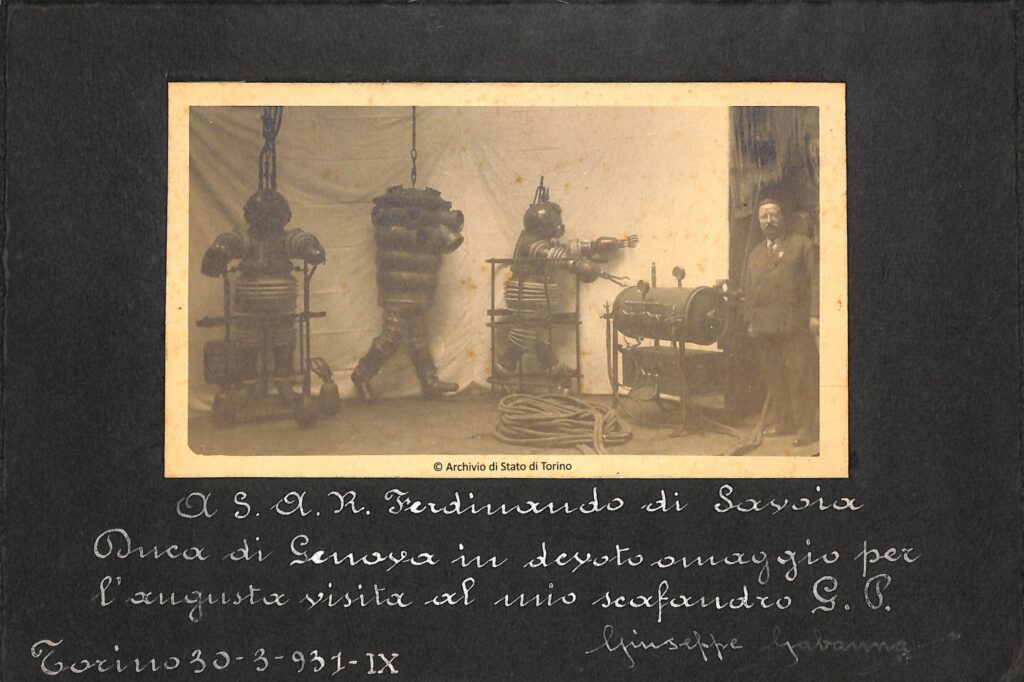
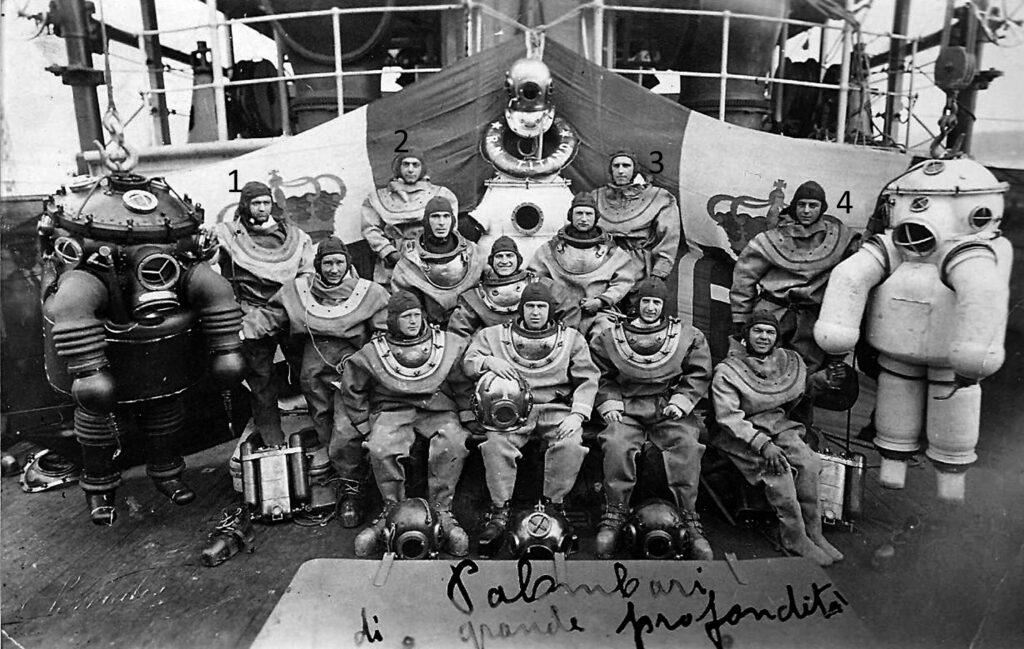
The two ADS in the photo – the Gabanna of 1931 and the Neufeldt&Kuhnke of 1927 – used on the RN Titano, both with the Galeazzi spherical structure body, were later replaced with the “Scafandro G. P. tipo Galeazzi R. M./200” after its successful testing, as already mentioned, by the same R. Galeazzi in the Gulf of La Spezia from aboard the same ship and completed on January 11th, 1938. (fig. 2) In a second rare photo, perhaps from 1940, of a group of deep-sea divers from the RN Ti-tano, we see that a large decompression chamber with riveted plates is also installed on board the ship. (fig. 16)
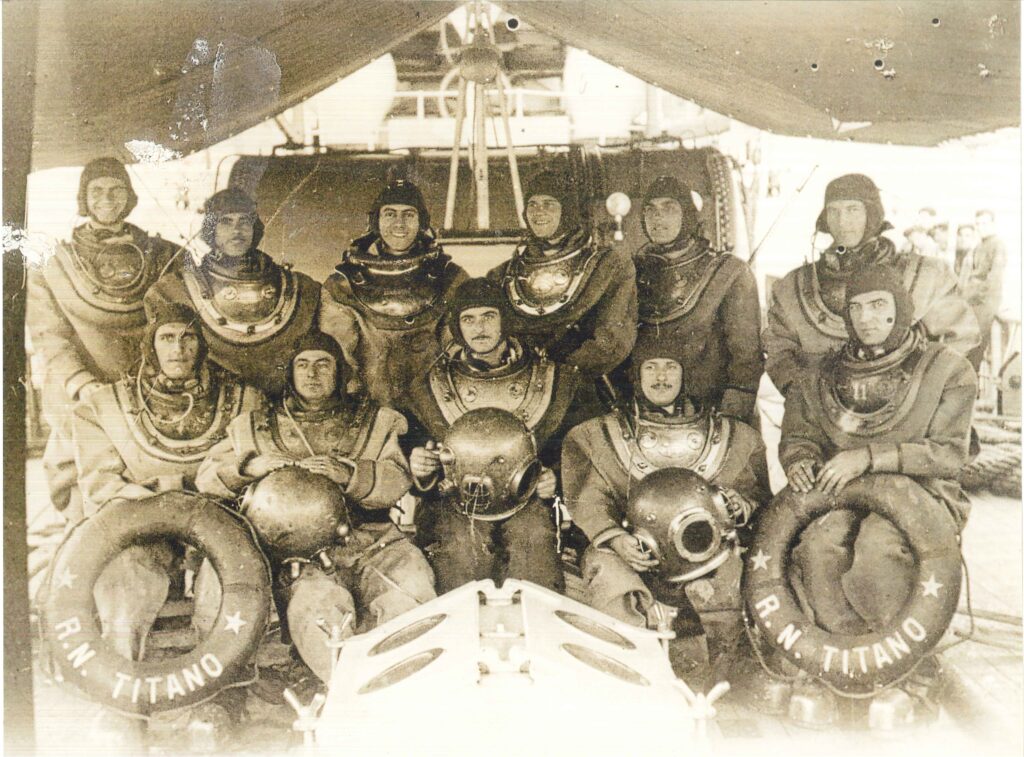
ADDENDUM
Fantasy very often draws from reality and this is how butoscopic turrets and ADSs – i.e. articulated rigid suits – have sometimes entered the world of comics, stories, detective or crime books. Below we see two examples of this reality. A buto-scope turret used in the detective story Nick Carter – The Underwater Trail and the Galeazzi G.P. articulated rigid diving suit used in the comic strip “Bazooka – war on all fronts” (figs. 17-18).
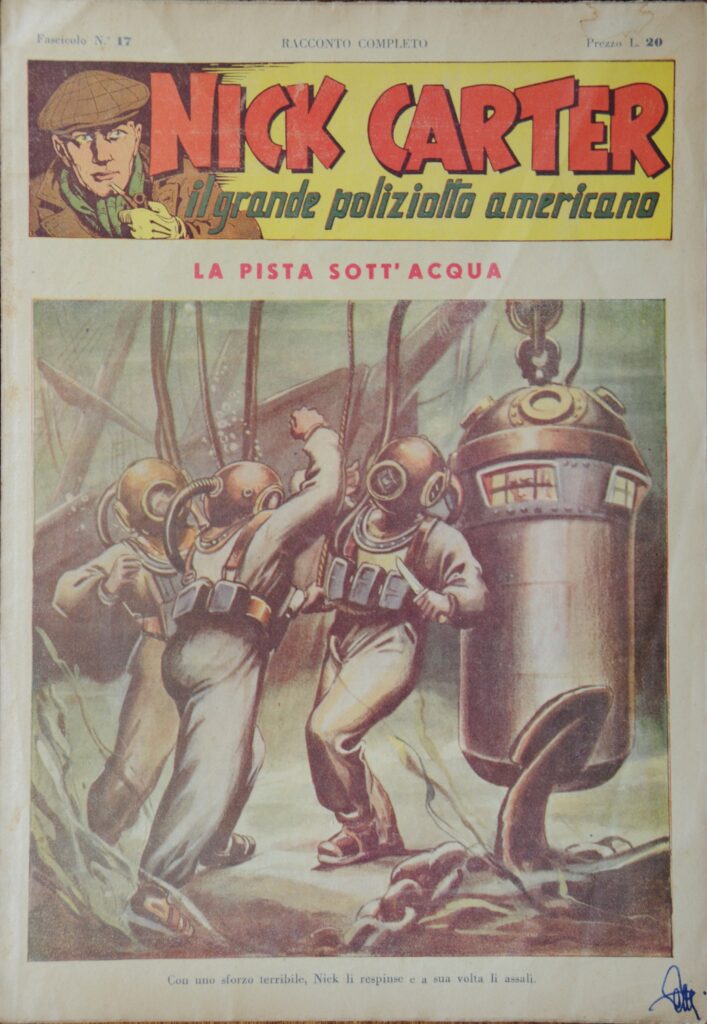
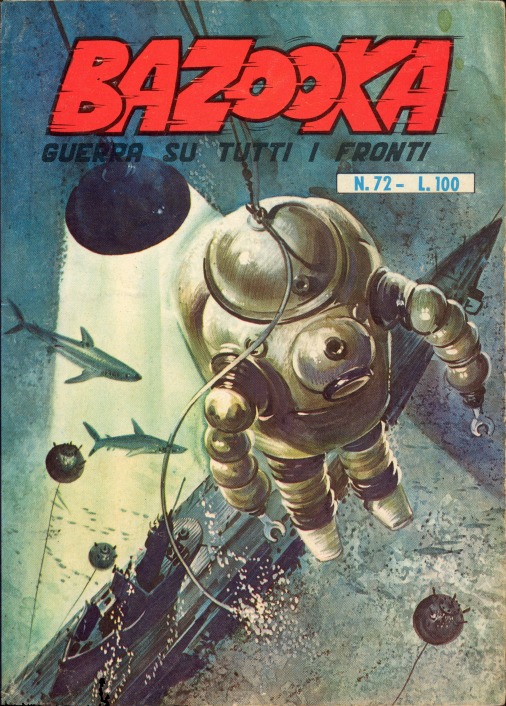
THANKS TO:
Eredi G. Gabanna – Letizia Galeazzi – Stefano Gargiulo-Francesca Giacchè – Boris Giannaccini – Massimiliano “Max” Perugia – Christophe Poinclou – Fabio Vitale.
BIBLIOGRAPHY
– F. Giacché, Teste di rame, Ediz. IRECO, 2013
– “HDS Notizie” n. 55 – November 2013 – F. Giacché, “Il palombaro del salvataggio dell’Iride”, “The diver of the Iride rescue”.
– Ministero della Marina, Rivista Marittima, June 1932-X
– http://www.divinghelmet.nl
– http://www.ocean4future.org/archives/11085
– http://www.divescrap.com/
– https://www.lavocedelmarinaio.com/2017/12/regiorimorchiatore-dalto-mare-titano/

Therebreathersite was founded by Jan Willem Bech in 1999. After a diving career of many years, he decided to start technical diving in 1999. He immediately noticed that at that time there was almost no website that contained the history of closed breathing systems. The start for the website led to a huge collection that offered about 1,300 pages of information until 2019. In 2019, a fresh start was made with the website now freely available online for everyone. Therebreathersite is a source of information for divers, researchers, technicians and students. I hope you enjoy browsing the content!
